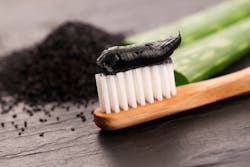Hygienists beware: DIY dentistry is trending
When a busy 20-something university student inquired about what could be done to straighten his crowded front teeth at his recall appointment, I gave him the same recommendation I have given thousands of times: orthodontic treatment. I started to give my usual speech on the subject, pointing out that we would refer him to an orthodontist and though the treatment takes time, it would improve both esthetics as well as the function of his bite. It was not long before he politely interrupted to inform me that he would like to do the clear aligner treatment he had heard of on social media that was a fraction of the price and did not involve seeing an orthodontist.
My patient explained how an impression kit would be sent to him, and he would take his own impressions and photos at home. Or he could opt for a free 3-D scan of his teeth and would never need to go to the dental office, since all the aligners would be shipped directly to him.
As I listened to this process of do-it-yourself (DIY) braces, I realized that a new challenge was upon me: I needed to edify myself on emerging dental trends. In the midst of the social media era, it is indisputable that anyone can show anyone how to do anything themselves. Therefore, dental professionals are now faced with the duty of educating the public on the dangers, the do’s, and the don’ts of DIY dental fads and shortcuts.
The DIY concept
The concept of DIY dentistry is not a new one. Long before the advent of the internet and social media, people have been finding at home “hacks” for expensive dental treatments. From brushing with baking soda to get a whiter smile, to scaling your own teeth with a sewing needle, there has always been an appealing, simpler, and cheaper alternative than going to the dental office. Or so it seemed.
Today, popular DIY dental treatments and products have been carefully designed to appeal to the masses, in particular the younger generations. The motivation to try DIY treatments has stayed the same over the years, but with each reiteration, a novel element makes the most popular dental trends even more attractive. It remains true that the most successful direct-to-consumer (DTC) dental products effectively cut out the “middle man"—albeit a trained professional—and are cheap, easy, and convenient. However, the attractiveness of employing innovative technology to achieve desired results is what truly sets today's DIY alternatives apart.
DIY orthodontic treatment
When technology is used to replace a traditional procedure, it is a praiseworthy achievement. Since the arrival of 3-D intraoral scanners to replace dental impressions in orthodontic and prosthodontic treatments, efficiency and accuracy in treatment design has improved. This is not only appealing to dental professionals, who no longer have to mix materials or load trays, but also to patients, who no do not have to endure the nauseating torture of a dental impression.
In particular, for the new generation of young adults, the attractiveness of using new technology is enough to make a long and uncomfortable treatment worth it, and, incredibly, you can “book a scan near you” to start your treatment with the simple click of a button.4 So, companies providing DTC orthodontic treatment have a great way to gather all the information they need in order to customize a treatment plan.2 Or do they?
The problem is that this is the only information they gather. There are no x-rays taken to check for bone level and thickness, impacted teeth, resorbed roots, or retained primary teeth. There is no dental examination to check for caries, periodontal health, intraoral soft tissue lesions, or general oral hygiene. This is essential information needed to compile a treatment plan, and without it there is a significant risk for long-term damage, including jaw pain (TMD), maloclussion, and tooth loss.3 After the scan, the aligners are fabricated by the lab and mailed right to the consumer's door step. Would an untrained customer have enough knowledge to know if the trays fit properly? Not to mention, without being monitored regularly, consumers can modify the treatment however they see fit. Some might decide to skip a few aligners in the sequence to make the treatment go faster, or wear each set for less time than indicated. This would clearly affect the success of the treatment, and by the time the consumer realized it, it would likely be too late to correct it. Despite the coolness of doing braces remotely, this is one shortcut not to take.
Oral hygiene shortcuts
Another kind of shortcut gaining popularity online involves using technology to simplify and accelerate at-home oral hygiene routines. It is not a new notion to dental professionals that flossing is too complicated and time-consuming for many; we know all too well that people have been coming up with shortcuts for interdental cleaning for decades. But apparently brushing has now been simplified as well.
Electric toothbrushes, of course, are not new, nor should they be considered a shortcut. However, the same technology has now been employed to create a "10-second toothbrush" available online. This imaginative toothbrush is shaped like a mouthguard and brushes all surfaces of all teeth simultaneously for 10 seconds once you bite into it. Just like a traditional electric toothbrush, it uses sonic vibrations and nylon bristles to clean your teeth and has a charging station as well. This "brush" is made of silicone, which makes it flexible and allows it to be "one size fits all," and the bristles are said to be angled at 45 degrees to ensure the correct technique to eliminate plaque from the gum line.1
What a great shortcut for someone who doesn’t have the time, diligence, or motivation to brush the old-fashioned way! Well, as dental professionals we should have some questions. First, teeth come in different shapes and sizes and are angulated and inclined differently in the mouth from one person to another. How can the bristles magically hit every gum line at 45 degrees without manually being oriented to do so? Misangulation of the bristles to the gum line can cause recession and abrasion, not to mention that tipped, rotated, and under-erupted teeth could be missed. Next, we should ask the age-old question, are the bristles soft? Also, once the bristles get worn, should it be thrown away and replaced? That means a significant additional expense would be incurred to replace it, which makes it less likely to be replaced as often as necessary.
To the untrained eye, using technology to make life simpler can only be advantageous, but when it comes to how it affects oral health, it can do more harm than good. Remarkably, though, using modern technology for shortcuts is not all that appeals to the masses. When it comes to DIY whitening, natural is trending.
DIY whitening
With the benefits of living a natural and organic life being promoted everywhere you look, it's not surprising that people are turning to natural alternatives to replace chemical-filled everyday necessities. The fewer the number of ingredients listed on a product, the better it supposedly is for your overall health. One such product currently being marketed on social media and disseminated to the masses via the internet is charcoal based toothpaste.
Charcoal does not only have the benefit of being a natural product, it also has properties that make it attractive for oral hygiene. The concept is simple: a charcoal-based toothpaste will bind to and absorb all unwanted particles from teeth and gums, i.e. bacteria, tartar, and stain, hence the promise of whiter teeth and a detoxified oral cavity. Words like “pure” and “eco-friendly” found right on the label, combined with videos revealing brighter and whiter teeth after brushing with this black paste makes it hard to resist trying this product.
Unfortunately, what is not displayed on social media is the permanent harm these products will likely cause. To dental professionals, the result is obvious: brushing with charcoal will cause abrasion and irreversible loss of enamel. Weaker and thinner enamel may lead to sensitivity, higher risk for caries, and fragile teeth that break and chip easily. Not to mention that removing surface stain with an abrasive paste does not change the color of teeth and therefore does not actually make teeth whiter.
What may be less obvious when discouraging charcoal-based toothpaste, however, are the benefits it does not provide. Many charcoal toothpastes do not contain fluoride or any other remineralizing ingredient. This omission, combined with loss of enamel caused by abrasion, increases caries risk. Furthermore, several charcoal toothpastes do not contain any antimicrobial components, meaning there is no prevention for gingivitis, periodontitis, or even halitosis.2
Oil pulling is another popular, natural way to whiten one’s teeth at home according to the internet. The mechanism of action of oil pulling is similar to that of charcoal. Swishing a tablespoon of viscous sesame, sunflower, or coconut oil in your mouth for 20 minutes is thought to absorb bacteria, toxins, and unwanted particles from the oral cavity. Interestingly, there is significant scientific evidence that oil pulling has antimicrobial effects on the oral cavity and as such can help to prevent caries, gingivitis, and periodontitis.3 However, claims that oil pulling is effective for teeth whitening are purely anecdotal and not evidence-based. So, while oil pulling does not have deleterious effects on the oral cavity, it is not an effective alternative for professional teeth whitening either.5,6 In truth, no matter what natural product promises to give whiter, brighter teeth, it remains true that changing the color of one’s teeth is a necessarily chemical process.4
Our responsibilities
Alas, in a world where there is an online video on how to DIY anything, it is incumbent upon dental professionals to make it clear that dentistry is not a DIY endeavor. Shortcuts for dental treatments and oral hygiene will have detrimental and irreversible consequences. By dispelling these fads on a daily basis, perhaps one day it will become clear that just because something is posted or endorsed on the internet does not mean it is advisable to try it without first checking the evidence.
References
Jessica Anne Hyppolite, BSc, RDH, has been practicing in both private and educational sectors since 2013. She graduated from University of Saskatchewan with a bachelor's in biology in 2009, and then obtained a graduate diploma in biotechnology and genomics from Concordia University in 2010. Her interest in health-related matters led her to pursue a diploma in dental Hygiene, which she completed in 2013. She lives in Montreal, Canada and has been working on the faculty of dentistry at McGill University since 2015.
About the Author

Jessica Anne Hyppolite, BSc, RDH
Jessica Anne Hyppolite, BSc, RDH, has been practicing in both private and educational sectors since 2013. She graduated from University of Saskatchewan with a bachelor's in biology in 2009, and then obtained a graduate diploma in biotechnology and genomics from Concordia University in 2010. Her interest in health-related matters led her to pursue a diploma in dental Hygiene, which she completed in 2013. She lives in Montreal, Canada and has been working on the faculty of dentistry at McGill University since 2015.
